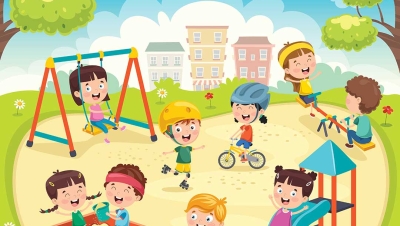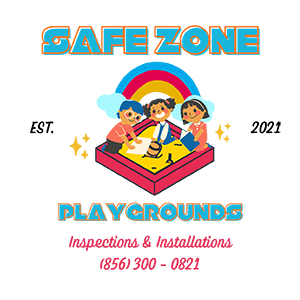Playground installation instructions and technical drawings are the result of many hours of building, testing and re-checking to support the creation of a written document that can be used in the field by installers.
Playground manufacturers only guarantee equipment built exactly to the specifications they outline in their manual and there are many good reasons for this.
Without consistency of installation, a structure can be compromised in any number of areas: strength, mobility, safety and durability, to name a few. From concrete footings, to posts and clamps, to the very last bolt tightened, the manufacturer’s written specifications are crucial to the success of a playground installation. Installation manuals tell the builder what, when, where, why and how to proceed with parts to build a playground. Think of building a tricycle kit at 1 a.m. Christmas morning and times that by 10. The details of installing something even as simple as a bolt can make the difference between a safe structure and one that may fail.
Most manufacturers of commercially fabricated playground equipment have designed a reliable set of instructions that are technically drafted plans which serve to navigate the entire building process. But keep in mind, not all playground structures are created equally. The diversity between manufacturers and styles of equipment within a single manufacturer requires prior knowledge and attention to detail, even for a component or piece of equipment you have installed many times. Attention to the individuality of every structure and the components that make that structure unique, begins by following the directives in the installation manual.
A separate set of installation instructions should be available to both the builder and the owner. Both need to retain this information in a safe record-keeping system. After installation, the manual(s) are valuable for ordering parts, making warranty claims, expansion of the structure, un-installation and reinstallation at a new location and, in extreme circumstances, for litigation. In addition to the written directives, technical drawings are a visual and handy way to communicate to the installer or manufacturer when replacing items under warranty or worn, damaged or defective parts. Want a fast and accurate way to get the part’s description, part number and job number? Refer to your installation manual.
Before beginning any installation project be sure to study all drawings, plans and specifications. Product assembly directions require use of specific parts matched to specific hardware. If a component part is matched to the wrong bolt or other hardware, equipment could fail and/or greatly affect the life expectancy of a component. The CPSC reports that as much as 10 percent of playground injuries are due to equipment failure. How many of these equipment failures were due to faulty installation? Adherence to written descriptions and drawings of hardware that match components as outlined in the installation manual is critical.
“Proper assembly and installation of playground equipment are crucial for the structural integrity, stability and overall safety. The people who assemble and install playground equipment should not deviate from the manufacturer’s instructions.” (CPSC Handbook for Public Playground Safety. section 7.1.)
Always use the parts and hardware specified in the installation instructions. Read the descriptions; do not rely solely on drawings and photographs. If there are questions or anything the installer does not understand, he should call the manufacturer for further clarification and instructions. Improperly assembled playground equipment can present a serious safety hazard.
A final note to playground owners. If you are lucky, you may retain all the installation manuals for every playground your department ever purchased, you may have stored the information for future reference and never need to refer to it again. Maybe the equipment never wears out, never needs to be moved or parts never need to be replaced. You may think, all that organizational work was for not. Then, you take a job in another city or in a different department. Won’t you be glad the last person left all their installation manuals neatly organized in the file cabinet … just the way you like them.
Playground Installation Manuals Should Include:
- Name, address, and phone number of the manufacturer of the equipment
- Job order number
- The manufacturer’s warranty
- Material specifications
- Construction or top view drawings
- Footing layout and details
- Name and phone number of the local sales representative
- Checklist of playground parts shipped
- General playground construction information
- Tools required list
- General playground safety information
- Maintenance instructions and master checklists
- Scale measurements
- Installation drawing and instructions for each specific component
- Identification of upright size, length, and placement
- A binder or carrier to keep the information organized




















